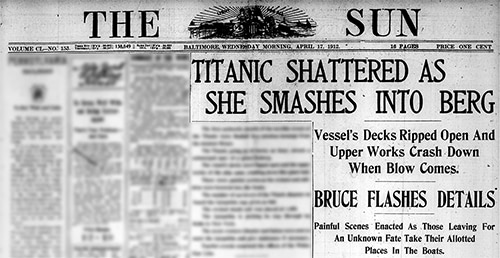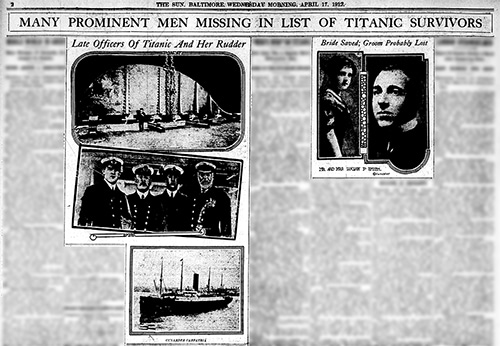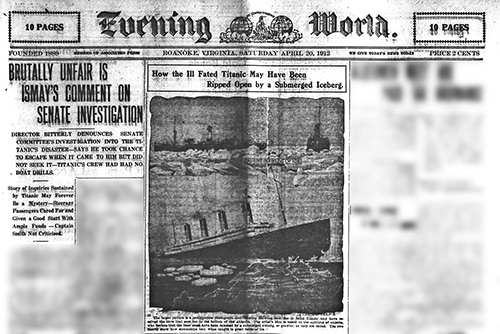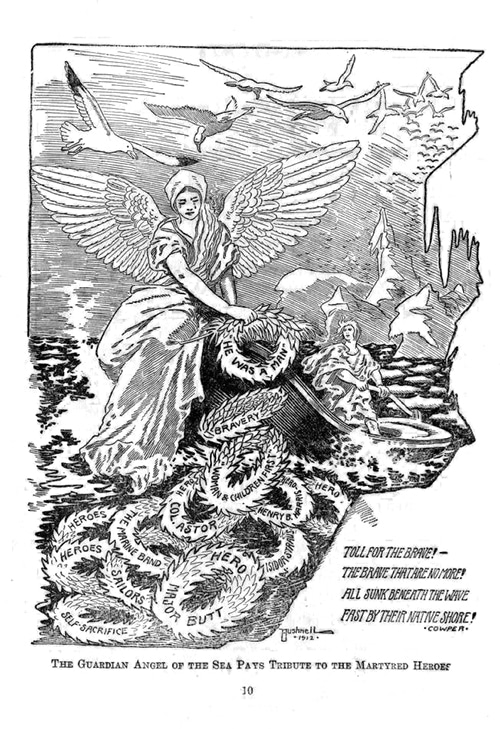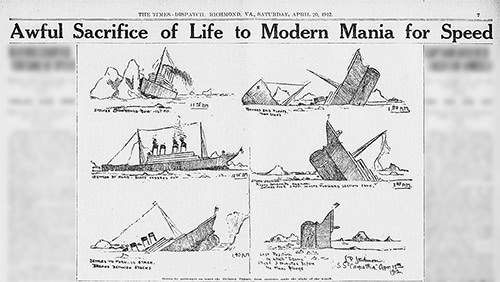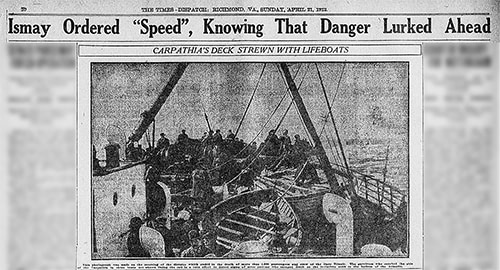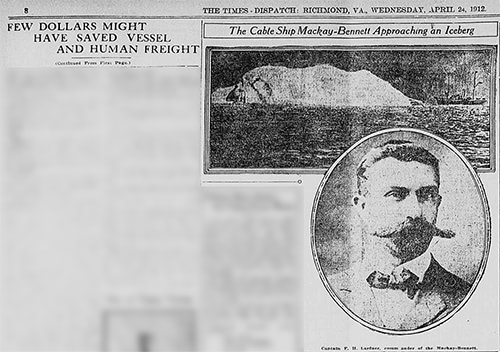The greatest source of pathos in the Titanic tragedy was that it was avoidable, a simple verity that has led to a rasher of “what ifs.”
If only the watch had had a pair of binoculars
If only the order to abandon ship had come more quickly.
If only the Californian had not ignored her distress calls and flares.
There are too many to list here.
Hubris may be the simplest explanation for the sinking of the Titanic. The world’s most wealthy, powerful, and influential people climbed aboard knowing they were taking a more treacherous transatlantic route than usual. No matter, the Titanic was unsinkable. Hubris indeed.
To quote, again, from the introduction; the sinking of the Titanic:
"...although caused by an iceberg was also man-made, the result of the state of mind--grandiose, avaricious, and self-confident--of the...magnates and engineer who conceived and built the ship."
The following images highlight the magnitude of the tragedy in both human and material loss, and demonstrate how quickly the press decried human efforts to beat the barriers of nature.
2,208 Souls on Board
While there was tremendous grieving in Southampton, England, the homeport of the Titanic, those in the United States waited in anxious anticipation as the survivors, aboard the Carpathia, steamed toward New York. Varying lists of dead and survivors were published by almost every newspaper in the country, but it wasn't until the cable steamer Mackay-Bennett began to pluck the dead from the sea, and send in lists of the identifiable dead, that hopes for a loved one’s survival were dashed.
Messages of condolence from around the world poured in. King George V and Queen Mary of England sent sympathies to the White Star Lines. So did their cousin the German Emperor, Wilhelm. Similar tidings were sent from Spain, France, Russia, Belgium, and the Netherlands.
What happened?
Within days of the Titanic’s sinking, the United States Senate ordered an investigation calling Bruce Ismay as the star witness/defendant. Despite his claims that he had nothing to do with the speed of the Titanic and that he had not pilfered a spot in a lifeboat, he was forever branded a coward and accomplice to the catastrophe.
The inquiry did not formally act against Ismay or White Star, and, in fact, White Star never had to pay reparations to relatives of the victims. The investigation would, however, condemn him and White Star for knowingly going too fast in dangerous waters and for having too few lifeboats.
It has been over 100 years since the Titanic met its tragic fate in the North Atlantic, but the stories, rumors, controversies, lies and legends surrounding it persist. The Titanic has continued to resonate in our consciousness, and continues to fascinate and confound us.
